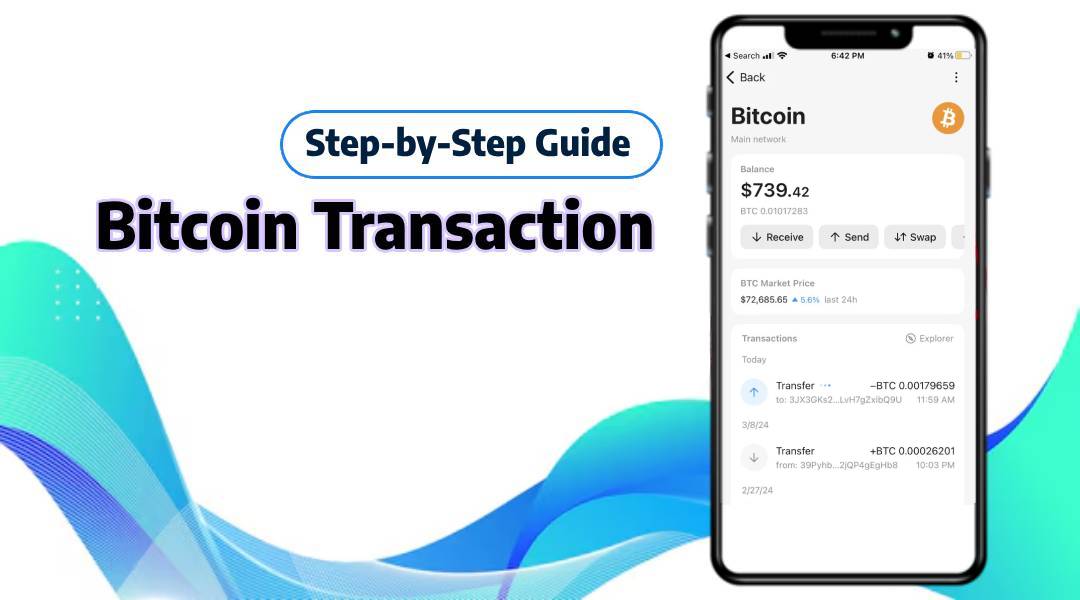
Bitcoin transactions rely on a decentralized network of miners to validate and confirm them. While most transactions are processed within a reasonable timeframe, there are instances where a transaction may remain unconfirmed for hours, days, or even indefinitely. In this blog, we’ll explore why this happens, what it means, and what steps you can take if your Bitcoin transaction is never confirmed.
For more information like this or Bitcoin customer service, contact us no
Also Read:
- How to Buy Crypto with Gift Card?
- Why Is My Bitcoin Transaction Pending?
How Bitcoin Transactions Work
When you send Bitcoin, your transaction is broadcast to the Bitcoin network and added to a pool of pending transactions known as the mempool. Miners prioritize transactions based on the transaction fee attached. Higher fees incentivize miners to include your transaction in the next block.
A transaction is considered confirmed once it is included in a block and added to the blockchain. Multiple confirmations further secure the transaction.
Why Bitcoin Transactions Remain Unconfirmed
Several factors can cause a Bitcoin transaction to remain unconfirmed:
1. Low Transaction Fee
Miners prioritize transactions with higher fees. If your transaction fee is too low compared to the current network demand, it may remain in the mempool.
2. Network Congestion
High network activity can lead to congestion, causing transactions with lower fees to experience significant delays or go unprocessed.
3. Double Spending
If there is an attempt to double-spend Bitcoin, miners will reject the conflicting transaction, leaving it unconfirmed.
4. Incorrect Inputs
Errors in the transaction details, such as an invalid address or insufficient funds, can result in the transaction being stuck.
What Happens if Your Bitcoin Transaction Is Never Confirmed?
If your transaction remains unconfirmed indefinitely, it may eventually be dropped from the mempool. This process varies depending on the node, but it generally takes about 72 hours. Once dropped, the Bitcoin is returned to the sender’s wallet as if the transaction never occurred.
However, if your wallet does not update automatically, you may need to manually cancel or rebroadcast the transaction.
What to Do if Your Bitcoin Transaction Is Stuck
If your Bitcoin transaction is unconfirmed, here are some actions you can take:
1. Wait
If the network is congested, your transaction may confirm once the demand decreases.
2. Use a Replace-By-Fee (RBF) Transaction
Some wallets support the RBF feature, which allows you to replace your original transaction with a new one, offering a higher fee to incentivize miners.
3. Use a Transaction Accelerator
Services like transaction accelerators can help prioritize your transaction for a fee.
4. Cancel and Resend
If your transaction remains unconfirmed for an extended period, you can cancel it (if supported by your wallet) and resend it with a higher fee.
5. Check Network Conditions
Use tools like a Bitcoin mempool explorer to check the current network conditions and fee rates.
How to Prevent Future Transaction Issues
To avoid unconfirmed transactions in the future:
- Choose an Appropriate Fee: Use a wallet that suggests optimal fees based on network conditions.
- Use a Reliable Wallet: Ensure your wallet supports advanced features like RBF and fee estimation.
- Monitor Network Activity: Check the mempool status before initiating large transactions.
Final Thoughts
An unconfirmed Bitcoin transaction can be frustrating, but understanding the process and options available can help you resolve the issue. By using appropriate transaction fees and reliable wallets, you can minimize the chances of a transaction remaining stuck.
Have you ever experienced a stuck Bitcoin transaction? Share your story or questions in the comments below!